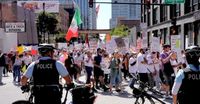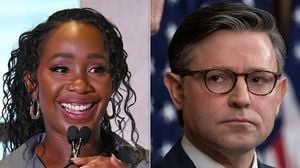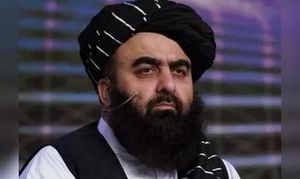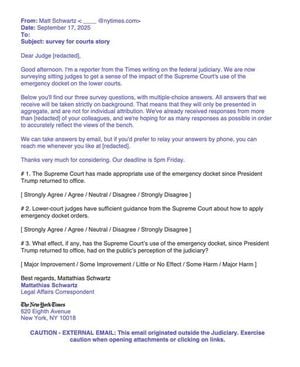On September 1, 2025, cities across the United States erupted in protest as hundreds of thousands of Americans took to the streets for Labor Day, rallying under the banner "Workers Over Billionaires." From Chicago’s historic Haymarket Memorial to the bustling avenues outside Trump Tower in Manhattan, demonstrators voiced their opposition to President Donald Trump’s policies, demanding fair wages, worker protections, and a halt to what they described as a billionaire-driven takeover of American democracy.
The movement was as sprawling as it was passionate. According to The New Republic, at least half a million people participated in more than a thousand demonstrations nationwide, a turnout that far exceeded expectations but received scant attention from mainstream media outlets. The protests were organized by a coalition of labor unions, advocacy groups, and progressive activists, with the support of the AFL-CIO and the May Day Strong movement. Their message was clear: workers, not billionaires, should shape the nation’s future.
In Chicago, a city with deep labor roots, the protest took on special significance. Demonstrators gathered near the Haymarket Memorial, a site symbolic of the American labor movement, to oppose President Trump’s threats to deploy the National Guard and escalate immigration enforcement. The rally’s urgency was heightened by recent statements from Homeland Security Secretary Kristi Noem, who confirmed plans to increase federal immigration operations in the city. Mayor Brandon Johnson addressed the crowd directly, declaring, “No federal troops in the city of Chicago! No militarized forces. We’re going to defend our democracy in the City of Chicago.” His words were met with thunderous applause and chants of “No troops in Chicago” and “Invest in Chicago,” echoing through the city’s streets, as reported by ABC News and The New York Times.
Stacy Davis Gates, president of the Chicago Teachers Union, delivered a fiery speech condemning what she described as the Trump administration’s efforts to undermine institutions built by and for workers. “Lincoln didn’t free us. We freed ourselves, workers. Our work created the Departments of Housing, Education, Labor, and more. We built the United States as we’ve known it, and now workers will protect it,” Gates said, according to the union’s social media post cited by The New Republic.
The demonstrations were not limited to major metropolitan centers. In Boston, the city’s first Labor Day parade in decades saw Governor Maura Healey and Senator Elizabeth Warren marching alongside union leaders and thousands of protestors. Boston Mayor Michelle Wu addressed the crowd at City Hall, vowing, “We won’t let you get away with kicking our loved ones off health care to fund tax breaks for the rich. We won’t let you sweep the Epstein files under your Qatari jet,” as reported by The Boston Globe. The parade reflected a broader trend: Labor Day 2025 was not just a celebration of workers but a day of resistance against policies deemed harmful to the working class.
In New York City, several hundred people gathered outside Trump Tower, a building that has become a lightning rod for protest since Trump’s rise to national prominence. Signs reading “Which Side Are You On?” and banners denouncing what demonstrators called a "fascist regime" were held aloft. The crowd, energized and vocal, chanted slogans like “Trump must go now!” and “No National Guard,” as reported by ABC News and The New York Times. The protests in Manhattan mirrored those in cities like Los Angeles, San Francisco, and Seattle, where union members, federal workers, and immigrant rights advocates joined forces to demand justice and dignity for all workers.
West Coast cities saw hundreds of people rallying from San Diego to Seattle. In Los Angeles, AFL-CIO President Liz Shuler joined members of the Los Angeles County Federation of Labor in Long Beach, while groups supporting federal workers and unions marched in San Francisco and Portland. Rally organizer May Day Strong, whose message was amplified by the AFL-CIO, warned on its website, “Billionaires are stealing from working families, destroying our democracy and building private armies to attack our towns and cities.” The call to action was unmistakable: collective resistance was needed to stop what they described as a billionaire takeover.
Smaller cities and college towns also saw significant turnouts. In Durham, North Carolina, hundreds of workers marched at Duke University, while in Asheville, protestors demanded “Power to the people!” Albuquerque, New Mexico, witnessed a crowd of 6,000, according to the American Federation of Teachers. Demonstrations were reported in Des Moines, Seattle, St. Louis, and Detroit, underscoring the breadth of the movement.
The protests were not without tension. In Chicago, a brief confrontation erupted when a woman emerged from a vehicle with Iowa plates, shouting “Long live Donald Trump” repeatedly. Protesters responded with shouts of their own until the woman departed, as noted by ABC News. For many, the stakes felt personal and immediate. Ziri Marquez, 25, told ABC News she was motivated by concerns over low wages, a stagnant economy, and the scapegoating of immigrants: “I think especially, you know, when we’re dealing with low wages and we’re dealing with a stagnant economy, immigrants are largely used as a scapegoat.”
Political leaders and activists emphasized the intersectionality of the movement. Veronica Castro, deputy director of the Illinois Coalition for Immigrant and Refugee Rights, stressed the importance of unity: “In times like this, coming together on Labor Day takes extra importance. The movement for worker rights, racial justice and immigrant rights has to keep moving forward in the face of Trump’s overreach.” U.S. Representative Jesús “Chuy” García voiced concerns about potential provocateurs at the upcoming Mexican Independence Day Parade, fearing federal agents might use disturbances as a pretext for further mobilization.
Beyond the immediate calls for a living wage and the defense of social programs, the protests reflected a deeper anxiety about the future of American democracy. King County Councilmember Teresa Mosqueda, speaking at Seattle’s Cascade Playground rally, put it succinctly: “Workers should be more powerful than the small billionaire class.” The sentiment was echoed by activists nationwide, who see the current moment as a pivotal test of the nation’s values and priorities.
Organizers in Chicago and elsewhere ramped up immigration rights trainings, particularly for undocumented immigrants, and circulated hotlines for reporting Immigration and Customs Enforcement (ICE) activity. The message was clear: resistance would not end with Labor Day. As Jonathan Gartrelle, a nonprofit worker from Queens, told The New York Times, “The ruling class, the governing class, the people that have all the money were betting that most people won’t act because they’re paralyzed by fear. But throughout history, when you underestimate anything, that is the point at which you fail.”
While the Trump administration and its supporters touted a “new dawn” and “golden age” for American workers, the scenes on Labor Day painted a far more divided picture. The day’s events revealed a nation grappling with fundamental questions about power, equity, and the role of ordinary people in shaping their destiny. For many, the fight is far from over.





